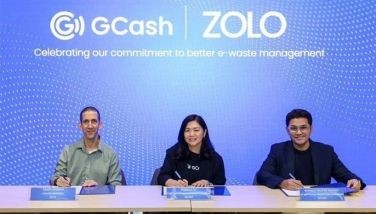Development of in-house training capacity
April 13, 2004 | 12:00am
In order to develop local capacity to continue the MABS technical assistance efforts after the phase out of the USAID-financed technical assistance contractor, MABS and the Rural Bankers Association of the Philippines (RBAP) is working with trained local consultants from the Associated Resources for Management and Development Inc. and Punla sa Tao Foundation, who will continue to provide microfinance technical assistance and training to interested rural banks after the project ends. A heavy emphasis is placed on developing the rural bank’s ability to conduct market research and to develop products that are responsive to microenterprises.
A combination of classroom training and one-on-one technical assistance is offered on the following topics: cashflow-based lending, enforcing zero-tolerance toward delinquency, internal control and fraud prevention and financial management for microfinance operations. In addition to helping rural banks develop the capacity to profitably expand their loan and deposit portfolios to microenterprises, some have found that their traditional operations are also benefiting from the MABS best practices principles, as described by a rural banker in Box 2.
Box 2: A rural banker’s testimonial to the MABS Approach. Our traditional loans were no longer as successful. We had already taken an interest in microfinance and had done group lending as part of our social commitment. But MABS has more appeal to commercial clients and we were looking for alternative products. With the continual presence of MABS consultants, we were able to incorporate microfinance into our bank and have now seen MABS best practices influence our other operations as well. – Tess Ganzon, Bangko Kabayan, Batangas
Results.
The systematic approach to the MABS services has a significant impact, allowing it to expand from its four original participating bank branches to serving 128 rural bank branches in just five years.
The MABS Approach has been successful in terms of economic and social impact. At first many rural bankers were skeptical and doubted whether microfinance could be a profitable venture. However, as the program gained credibility and a few rural banks began to demonstrate the profit potential, many other rural bankers became interested in microfinance and demand for MABS‚ services increased.
Economic impact. Since the MABS program started four years ago, its participating banks have disbursed over P3.6 billion (roughly $64 million) to more than 120,000 microentrepreneurs. As of February 2004, participating banks had 47,222 active loan clients, with a total outstanding loan portfolio of P329 million. Micro-deposit balances have increased to P604 million. Total micro-depositors served by the participating banks have increased to more than 524,000. All 20 of the initial participating bank’s microfinance units in Mindanao were profitable within 12 months of starting their microlending operations.
Social impact. In terms of social impact, MABS participating banks predominantly serve female microentrepreneurs (85 percent, compared to 71 percent on average for the Asian MFIs participating in this report). In an impact study conducted last year, almost half of all clients reported that their business income had increased over the last 12 months. With an average loan balance of participating bank’s microfinance portfolios of only $125 during December 2002, the MABS program has continued to demonstrate that commercial MFIs can serve the rural poor, in terms of both savings and lending, and make a profit in the process.
Conclusion. The MABS program acts as a demonstration model for future international development efforts to address rural poverty. By working with local institutions and employing best practices principles, MABS has proven that microfinance can be sustainable while serving the rural poor. In fact, MABS participating bank’s profitability has increased interest in microfinance among commercial bankers in the Philippines, attracting more and more financial providers to the microfinance sector. In other words, having the proper commercial incentives in place is leading to expanded outreach to the poor, thereby serving an important social objective.
Anita Campion is manager of banking and enterprise development at Chemonics International Inc., and John Owens is the chief of party for the MABS program.
A combination of classroom training and one-on-one technical assistance is offered on the following topics: cashflow-based lending, enforcing zero-tolerance toward delinquency, internal control and fraud prevention and financial management for microfinance operations. In addition to helping rural banks develop the capacity to profitably expand their loan and deposit portfolios to microenterprises, some have found that their traditional operations are also benefiting from the MABS best practices principles, as described by a rural banker in Box 2.
Box 2: A rural banker’s testimonial to the MABS Approach. Our traditional loans were no longer as successful. We had already taken an interest in microfinance and had done group lending as part of our social commitment. But MABS has more appeal to commercial clients and we were looking for alternative products. With the continual presence of MABS consultants, we were able to incorporate microfinance into our bank and have now seen MABS best practices influence our other operations as well. – Tess Ganzon, Bangko Kabayan, Batangas
Results.
The systematic approach to the MABS services has a significant impact, allowing it to expand from its four original participating bank branches to serving 128 rural bank branches in just five years.
The MABS Approach has been successful in terms of economic and social impact. At first many rural bankers were skeptical and doubted whether microfinance could be a profitable venture. However, as the program gained credibility and a few rural banks began to demonstrate the profit potential, many other rural bankers became interested in microfinance and demand for MABS‚ services increased.
Economic impact. Since the MABS program started four years ago, its participating banks have disbursed over P3.6 billion (roughly $64 million) to more than 120,000 microentrepreneurs. As of February 2004, participating banks had 47,222 active loan clients, with a total outstanding loan portfolio of P329 million. Micro-deposit balances have increased to P604 million. Total micro-depositors served by the participating banks have increased to more than 524,000. All 20 of the initial participating bank’s microfinance units in Mindanao were profitable within 12 months of starting their microlending operations.
Social impact. In terms of social impact, MABS participating banks predominantly serve female microentrepreneurs (85 percent, compared to 71 percent on average for the Asian MFIs participating in this report). In an impact study conducted last year, almost half of all clients reported that their business income had increased over the last 12 months. With an average loan balance of participating bank’s microfinance portfolios of only $125 during December 2002, the MABS program has continued to demonstrate that commercial MFIs can serve the rural poor, in terms of both savings and lending, and make a profit in the process.
Conclusion. The MABS program acts as a demonstration model for future international development efforts to address rural poverty. By working with local institutions and employing best practices principles, MABS has proven that microfinance can be sustainable while serving the rural poor. In fact, MABS participating bank’s profitability has increased interest in microfinance among commercial bankers in the Philippines, attracting more and more financial providers to the microfinance sector. In other words, having the proper commercial incentives in place is leading to expanded outreach to the poor, thereby serving an important social objective.
Anita Campion is manager of banking and enterprise development at Chemonics International Inc., and John Owens is the chief of party for the MABS program.
BrandSpace Articles
<
>
- Latest
Latest
Latest
December 17, 2024 - 10:00am
December 17, 2024 - 10:00am
December 13, 2024 - 12:19pm
December 13, 2024 - 12:19pm
December 4, 2024 - 4:05pm
December 4, 2024 - 4:05pm
November 25, 2024 - 9:35am
November 25, 2024 - 9:35am
October 8, 2024 - 7:00am
October 8, 2024 - 7:00am
Recommended





























